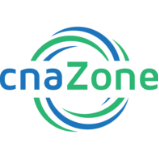Course Description
Sleep Disorders
Course Summary
This CNA inservice provides information on sleep disorders.
Course Objectives
- Identify the correct definition of insomnia.
- Identify the three most common sleep disorders.
- Identify one commonly used treatment for each of the three sleep disorders.
- Identify a population that is likely to suffer sleep disorders.
- Identify the three basic principles of sleep hygiene.
Course Syllabus
- Introduction
- The Definition of Insomnia
- What is Sleep?
- The Process of Sleep
- Narcolepsy
- Obstructive Sleep Apnea
- Restless Legs Syndrome
- How to Get a Good Night's Sleep
Target Audience:
CNA
Credits:
1.0
Preview the Materials:
C052C



